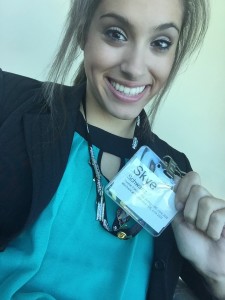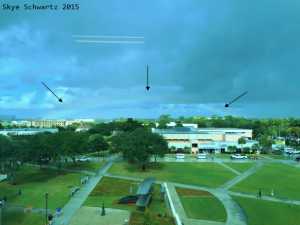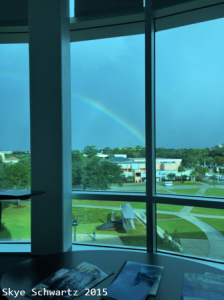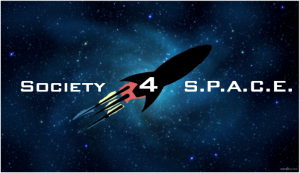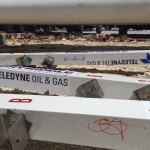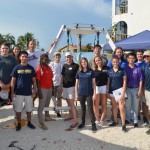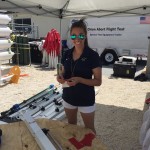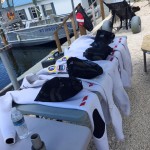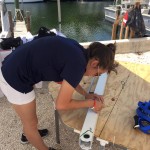Hello all! Hope your Monday wasn’t too bad. Yeah, we all hate Mondays! I actually kind of like my Mondays. I only have on class: MA241 from 1:00p-1:50p. Now that I have a car, 🙂 it was nice to sleep in a little and relax before class and then head home right after and go back to watching Netflix. Now I know we all love Netflix! Then I do have to go back at 5:30p-8:00p for meetings, but it is not so bad.
Fall break was full of studying, packing, and yes, again, Netflix. Thursday night a few friends and I went bowling at Bellair Lanes down on A1A for 25 cent night. Every Tuesday, Thursday, and Sunday Bellair Lanes has a special. It is an $11 cover fee then its 25 cent games, hotdogs, sodas, and shoes are included. It’s pretty sweet! Between the 10 people that were there we ordered 30 hotdogs and played about 8-10 rounds of bowling. For the 4 rounds and 3 hotdogs I ate, plus the soda, it only cost $2.00 for all of that! It was a super fun and cheap night. After that on Friday, my boyfriend and I packed up the kitchen (moving this coming weekend) and then watched Netflix for the rest of the day. Not very eventful. On Saturday we had a BBQ with one of our friends and cooked Hamburgers and stuffed jalapeños. I don’t like jalapeños so I passed on those! Then, the night ended with Avatar Golf and guitar playing. Sunday was the most tedious day. From 9:00a-9:00p it was all homework and studying. Not very fun but us College Students are great and putting off homework on breaks!
— The Martian —
On another note, I forgot to write a blog about this when it happened, but like they say, better late than never! On October 1st, I went to go see “The Martian.” Yes, I am a space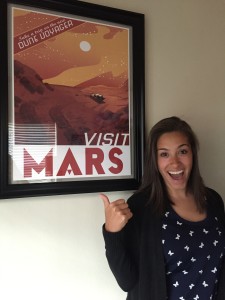 nerd, I want to be an astronaut, and I plan on being the first person to step foot on Mars, so yes, “The Martian.” Holy moly! It was the best movie of life! I am not a big reader but I read “The Martian” and I could not put the book down! It was thrilling, funny, and full of action. Best book I have ever read! The movie did have to cut some parts out that I should have been in there, but after it is Hollywood. They can only fit so much into a 2 hour time span.
nerd, I want to be an astronaut, and I plan on being the first person to step foot on Mars, so yes, “The Martian.” Holy moly! It was the best movie of life! I am not a big reader but I read “The Martian” and I could not put the book down! It was thrilling, funny, and full of action. Best book I have ever read! The movie did have to cut some parts out that I should have been in there, but after it is Hollywood. They can only fit so much into a 2 hour time span.
The way they cast “The Martian” was absolutely perfect! They could not have cast it any better. Matt Damon had Mark Watney down pat! And Jessica Chastain, she did a phenomenal job! The movie had 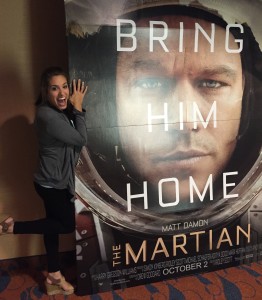 a perfect mix of comedy, action, drama, and potatoes. A lot of potatoes! Out of the space trilogy, “Gravity (2013),” “Interstellar (2014),” and “The Martian (2015),” “The Martian” is definitely my number one! As you can see I was a little obsessed with the poster. I wanted to take it home. On my social media accounts, I even changed my profile picture and I became “The Martian.” Yes, I am in love with the movie, the concept, and the execution.
a perfect mix of comedy, action, drama, and potatoes. A lot of potatoes! Out of the space trilogy, “Gravity (2013),” “Interstellar (2014),” and “The Martian (2015),” “The Martian” is definitely my number one! As you can see I was a little obsessed with the poster. I wanted to take it home. On my social media accounts, I even changed my profile picture and I became “The Martian.” Yes, I am in love with the movie, the concept, and the execution.
My boyfriend Josh and I, had the first showing! We saw it Thursday October 1st at 8:00p! Both of us being excited, but obviously I was a little more excited because we got to the theater 2 hours early. Yep! There was no one in the theater for a good hour. It was nice listening to music and talking about the book. The movie was a nice treat after reading the book. Even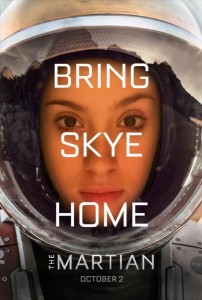 though I already knew what was going to happen, I still was on the edge of my seat! What can I say, I love space!
though I already knew what was going to happen, I still was on the edge of my seat! What can I say, I love space!
I haven’t gone to the movies in a while. I have seen a lot of movies good and bad. However, “The Martian” is like no movie I have ever seen. It had the right balance, the right cast, and the perfect story. There was enough emotion, heart, and soul put into this movie and you can tell. It puts the idea of going to Mars into perspective. Things can go wrong, risks are taken, and lives are at stake. But for those who seek adventure and exploration it can become a reality.


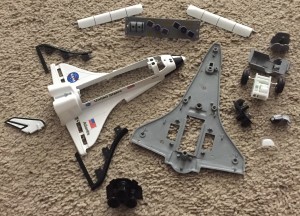
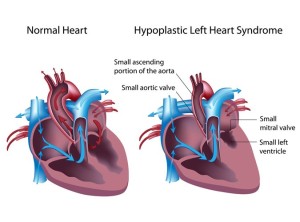 Riddle include the Hypoplastic Left Heart Syndrome. Hypoplastic Left Heart Syndrome, or HLHS, is “one of the most complex cardiac defects seen in the newborn and remains probably the most challenging to manage of all congenital heart defects. It is one of a
Riddle include the Hypoplastic Left Heart Syndrome. Hypoplastic Left Heart Syndrome, or HLHS, is “one of the most complex cardiac defects seen in the newborn and remains probably the most challenging to manage of all congenital heart defects. It is one of a